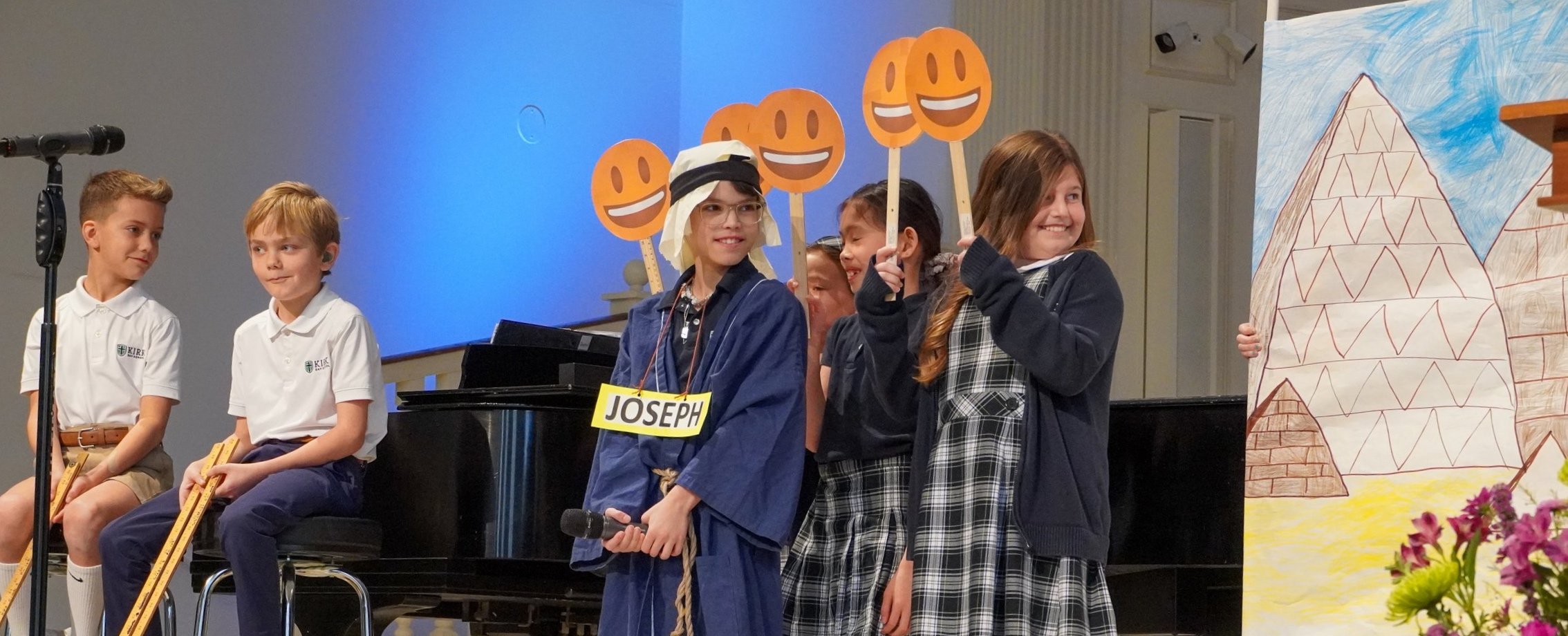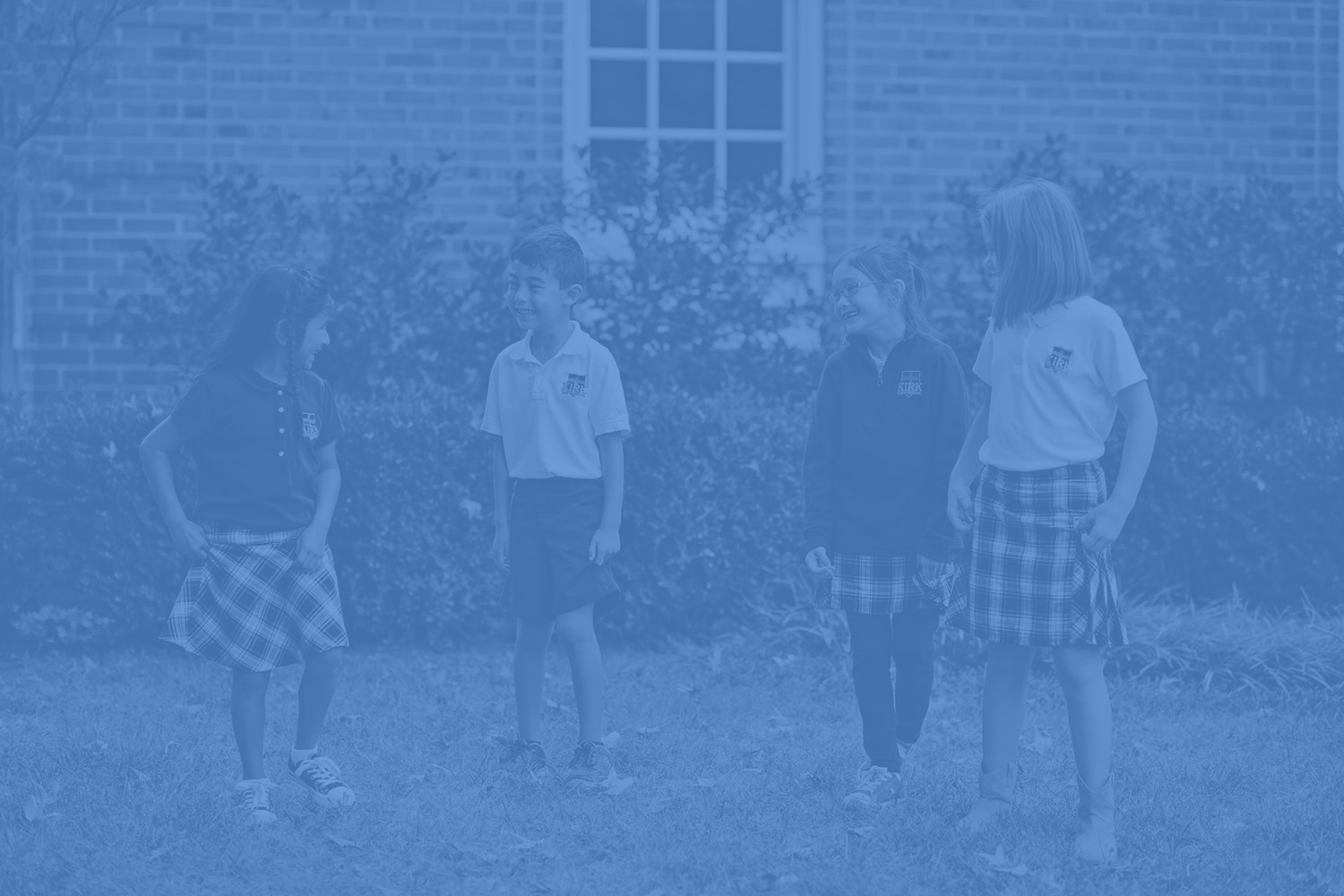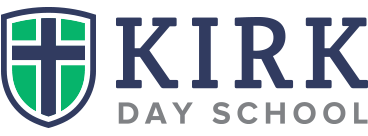
The co-curricular program is primary, not secondary, in importance to the development of the child.
Kirk Day School recognizes that children are each created with their own unique gifts and a curriculum that is balanced in its emphasis on academics and the necessary co-curricular subject areas will enhance these blessings, resulting in a more well-rounded individual. Children learn in multiple ways through a variety of strategies. The co-curricular classes give students opportunities to learn more about their academic subjects or themes through hands-on creative art projects, vocal and instrumental music, foreign language and culture, as well as literature enrichment.
Vocal and Instrumental Music
The elements of music (rhythm, melody, harmony, expression and form) are taught in developmental sequence in all grades. Specific skills include singing, playing instruments (both pitched and unpitched), listening, movement, reading music and composition. The study of composers and various styles of music are also a part of the curriculum. Each class participates in one of three annual music programs with the 6th graders additionally presenting a spring musical. Music classes meet two times a week.
KDS Singers: The Kirk Day School Singers is an auditioned chorus from grades 4, 5, and 6. This is a group for students who love to sing. They rehearse one morning per week before school and perform in chapel, concerts, retirement homes, and music festivals.
Band: Students in the fifth and sixth grades may elect to participate in an introductory band experience. Through group lessons on brass, woodwind, or percussion instruments students learn the basics (tone production, instrumental technique, music reading) necessary to participate in an elementary band. Band meets one to two times a week depending upon grade.
Art
Students explore, evaluate, and engage with art in meaningful skill-building projects and activities. Emphasis is placed on understanding the elements of art and how they are utilized by the great art masters as well as by students today. Students are engaged in the process of creating art through the use of a variety of materials to make 2D and 3D art including: drawing, painting, printmaking, collage, sculpture, and more. An example of this process is evident in the kindergarten through second grades’ focus on understanding drawing using the Mona Brooks Drawing With Children method as they break down large art pieces into dots, circles, lines, curved lines, and angled lines; while sixth graders construct chosen Independent Study Projects to demonstrate a culmination of artistic learning. Art meets once weekly for each class.
Physical Education
The P.E. program focuses on several learning domains: psycho-motor (motor skill, body management and health awareness), cognitive (movement concepts and safety), and affective (good sportsmanship, cooperation and effort). The goals of the program include personalized physical fitness, competency in a variety of skills for physical activity, as well as knowledge of motor skill performance and fitness maintenance. These are achieved as students learn essential athletic skills while playing numerous classic sports, along with a wide variety of fun creative activities designed to motivate and engage them in physical activity. Students participate in P.E. classes four days a week.
Library
The Kirk Day School library contains over 12,000 titles which are regularly reviewed and revised for the instruction and enrichment of our students including a broad collection of classic children’s literature, award-winning fiction, as well as non-fiction and reference materials. The library curriculum is designed to encourage a love of reading; foster a general knowledge of children’s literature, authors and genres; and prepare students to use any library with skill and confidence. Students discover a love for books through story-time, thematic library skill lessons, reading incentive programs, and the selection of books appropriate to their interests and reading abilities. Older students become more independent users of the library by learning its basic resources and systems, particularly the cataloging of both fiction and non-fiction books. Library classes are scheduled weekly or bi-weekly.
Foreign Language
Spanish: Students from preschool through sixth grade receive foreign language instruction in Spanish. The youngest learners (preschool-kindergarten) attend Spanish weekly. These students learn to recognize the sounds of Spanish, to comprehend what is being said, and to respond physically to commands through games, songs, puppets, videos, and stories. First through third graders build on the listening skills acquired in earlier grades as they begin to learn the fundamentals of reading and writing in Spanish, and to spontaneously express themselves verbally. The focus of fourth, fifth, and sixth grade students is primarily conversation in addition to reading and writing. Opportunities to not only read but discuss Spanish literature is provided to upper elementary students. Additionally, classes participate in a culture focus learning basic facts about a Spanish-speaking country or region (e.g., Spain and South America), and celebrating its customs and/or holidays. All elementary students receive foreign language instruction twice weekly.
Ready to learn more?
We'd love to give you a campus tour or a quick look into our classrooms.






